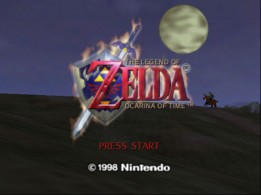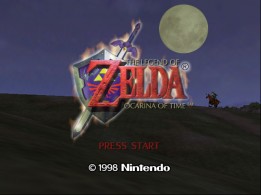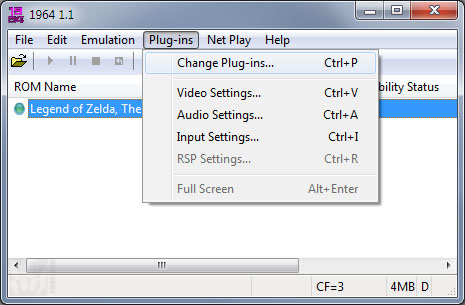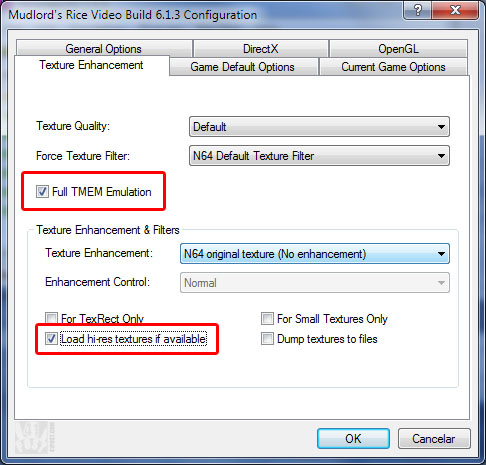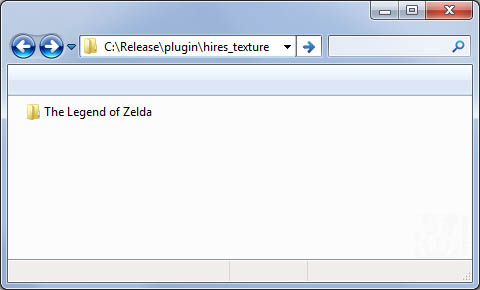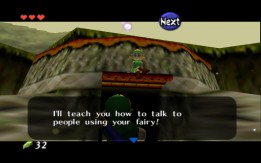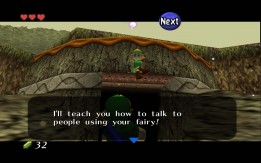How to play Ocarina of Time with high resolution textures
Posted by Dimitri | Oct 21st, 2010 | Filed under Retro Games

This post will explain the necessary steps to run The Legend of Zelda: Ocarina of Time or any other N64 with high resolution textures. It’s easy to find tutorials explaining how to get the new textures working with the Project64 emulator, but here you will find information on how to get these textures working with the 1964 (nineteen64) emulator. The process described here will be the same for other emulators, since the video plug-in is the actual responsible for swapping textures, so, the instructions contained in this post should also work with Project64.
The following images are an example of what the game will look like after the addition of high resolution textures:
I’ll assume that the reader is familiar with this emulators, so, let’s start by downloading 1964.
Here’s a link where you can download the emulator: 1964 Download Page.
By the time this post had been written, the latest version was the 1.1.0. The 1964_11.rar file comes with the emulator executable and source code. The emulator executable is at the bin/release folder. Extract all contents of the Release folder to some place you can find later.
You will also need a copy of the Mudlord’s Rice Video Plugin. This video plug-in swaps the original texture with high resolution ones, if available. Download version 6.1.4 here. It’s the RiceVideoSetup.exe file. Run the setup, and select the emulator folder as the installation directory.
At this point, download a high resolution texture pack for Ocarina of Time. There are lot’s of different packs for the first N64 Zelda game, but we will be using the Federelli’s version, which you can grab: here. After that, open the emulator’s default video plug-in by going to: Plug-ins => Change Plug-ins. Then, select Mudlord’s Rice Video Build 6.1.4 as the Default Video Plug-In.
After that, open the plug-in settings by clicking on Video Settings. Check the following options at the Texture Enhancement Tab:
By checking ‘Load hi-res textures if available’ option, a folder called hires_texture on your emulator’s plugin folder will be created. Open the folder where the 1964.exe was extracted, and then go to ‘plugin’ sub folder and finally, open the hires_texture directory.
Now, just extract the Fredelli’s Texture Pack and place the folder named ‘The Legend of Zelda’ inside the emulator’s hires_texture folder.
If you start the game at the emulator, it will display a black screen before the game starts up, meaning that the high resolution textures are being loaded. The game should start with the new textures. The two following images are the same scene, one rendered with the original textures and the other with the Federelli’s version:
This process can be repeated for any N64 game that has a high resolution pack of textures. Note that the pack of textures extracted to the hires_texture folder must have the correct name of the game. The mentioned pack in this post already extracts the textures with the correct folder name. But if you get another pack that doesn’t have the correct name, run the game with 1964 and see what name it will display at the emulator’s title bar.
Case you need more high resolution texture packs, search the internet and you will find a lot more. There is even a ‘toon’ pack for Ocarina of Time. Remember that for the the Master Quest version, you will need a different pack, as the emulator understands it like a completely different game.
UPDATE: I’ve tested this method with a most up to date version of the plug-in, named Aristotle Mudlord Rice Video 6.1.9, but couldn’t get it to work with shaders, although the textures where looking better than the images in this post. That happened because a greater number of high resolution textures could be rendered, replacing the old ones. If you want to try it, download it here. For a most up-to-date texture pack, visit N64 Redux.
Want to take one step further? Add shaders to the game: How to add shaders to Ocarina of Time.
UPDATE: This is a video of the game being rendered with Mudlord’s Rice Video 6.1.4 and using texture pack:
Be the first to leave a comment!


